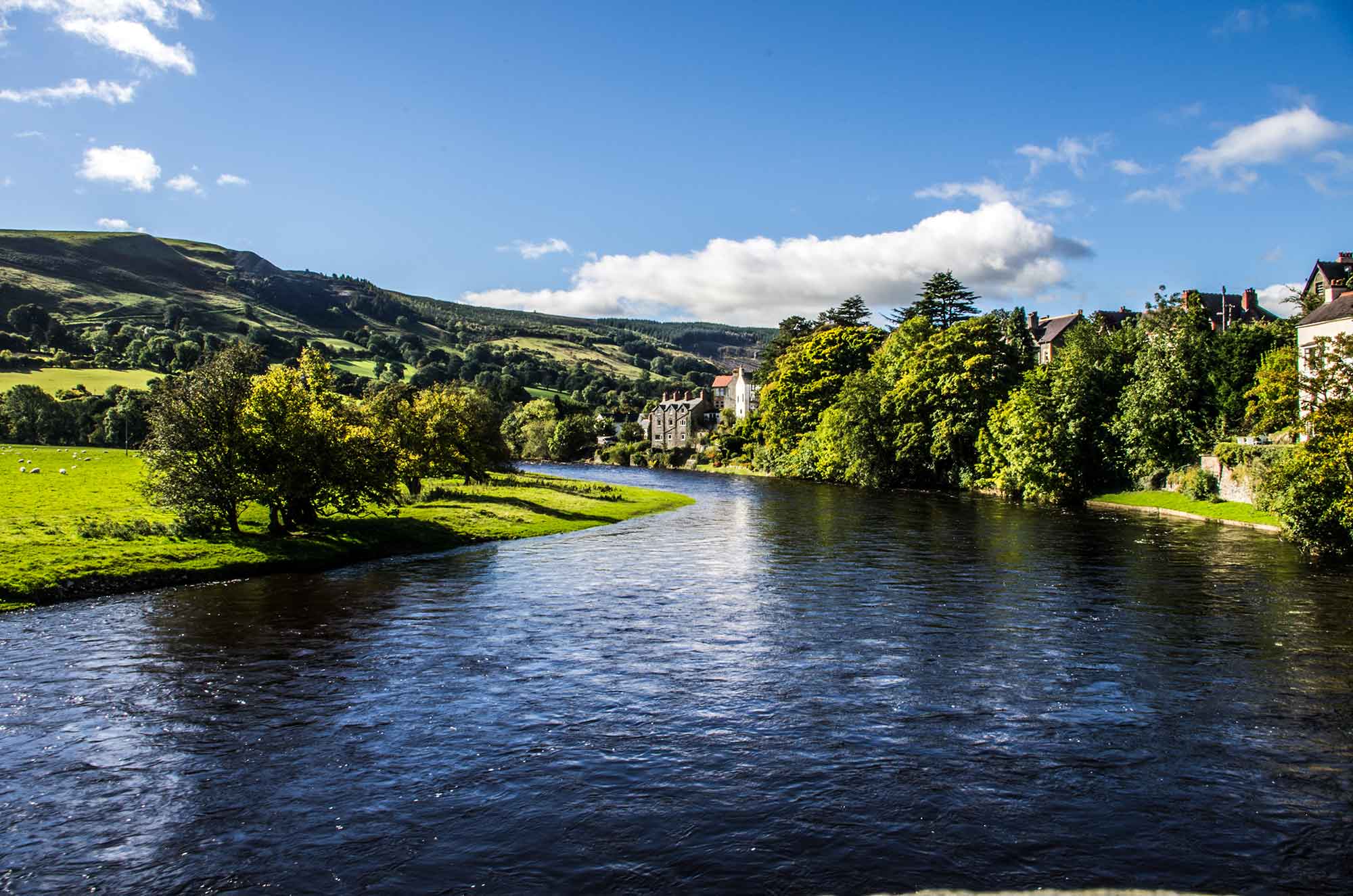Explore Surrounding Corwen
If you are visiting Corwen, why not explore some of these villages nearby for activities and attractions, history, landscapes and a friendly welcome.
If you are visiting Corwen, why not explore some of these villages nearby for activities and attractions, history, landscapes and a friendly welcome.
A remote upland community in a steep-sided valley, clustered round the ‘prayer house of Gwerfil the Red-haired’ – the 12th century princess who founded its little church. It houses unique 15th century carved panels of the Crucifixion and other fine woodwork but is closed at the moment due to bats.
A small village at the foot of Llantysilio Mountain. Its pretty church has an Elizabethan chapel added by Thomas Yale whose home was northeast of the village at Plas yn Iâl (you can stay here.) Yale university records show that Elihu the grandson of Thomas who had made his fortune working for the East India Company aided the building of a new university by sending 417 books, a portrait of King George I, and nine bales of goods. The latter was sold for £800, which was a substantial sum in the early 18th century. In gratitude, officials of the college named the new building ‘Yale’, and eventually the entire institution became known as simply ‘Yale’.


The old township of Carrog has given its name to the picturesque community which has grown up round the centre of Owain Glyndŵr’s manor: down by the River Dee is the possible site of his prison house – Carchardy. Owain Glyndŵr’s Mount is near Llidiart-y-Parc and can be seen from the A5 road between Llangollen and Corwen. There is an imposing statue of Owain Glyndŵr on his horse in the nearby town of Corwen. The pretty church of the old Llansantffraid Glyndyfrdwy parish and the notable stone bridge of 1661 make the village a haven for tourists, walkers, painters and fishermen. The restored Victorian train station was, until 2014, the terminus of the Llangollen Heritage Railway that now runs all the way to Corwen. The Grouse Inn offers lovely views over the river and there is a popular campsite near the station.
A hillside village high above the Vale of Clwyd, whose church has two outstanding features. Its interior is dominated by the intricately carved late mediaeval rood screen and loft, one of only a few complete Welsh survivors. Outside is the finely sculpted 15th century stone preaching cross (Cadw), likewise among the best-preserved in Wales.

Gwyddelwern (‘the Irishman’s marsh’) is a wayside village with a spired Victorian church and timber-framed inn (sadly for sale at the moment.) The nearby hamlet of Bryn Saith Marchog, features in the story of Branwen, daughter of Llyr, part of the Mabinogion, and is so named after Bendigeidfran (Bran the Blessed), who stationed seven princes or knights there (the Saith Marchog) to watch over his lands while he was away in Ireland.
On Offa’s Dyke National Trail and offering mountain biking opportunities, Llandegla was long renowned for its holy well of St. Tegla, believed to cure epilepsy if users performed elaborate rituals involving chickens. By the road nearby is the fine Welsh earthwork castle, Tomen-y-Rhodwydd.
The principal village of the Upper Dee Valley, at the foot of the wild Berwyn hills, with holy wells and prehistoric sites nearby. Ramblers can ascend from here to Moel Ty Uchaf stone circle and the Berwyn Range. It’s also won awards for its squeaky clean toilets, which is run by a host of volunteers. It has a lovely pub called the Dudley Arms, a number one trip advisor the Berwyn Restaurant and the Michelin starred Tyddyn Llan.

A pretty hamlet in the lush valley of the Afon y Maes, centred on its pub and double-naved, yew-encircled church. This displays exceptionally fine carved woodwork and barrel roofs, with monuments to the squires of nearby Nantclwyd Hall [private].